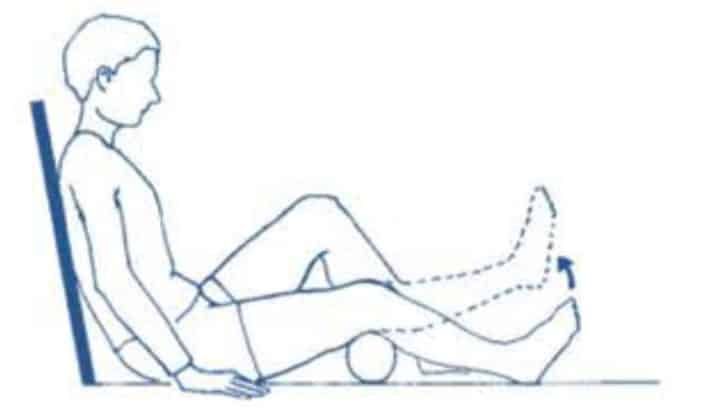Quadriceps lag: physiological vs pathological
Stillman B.C. conducted study on 64 healthy subjects with no history of knee pain or injury. He found all of them with physiological quadriceps lag: that is, in most subjects the active limit of knee extension fell short of the passive limit. With the subjects seated, for the passive test the examiner lifted the heel until the relaxed knee sagged into full extension under its own weight.
The active test component comprised maximum active extension held for at least 5 sec. Videotaped reference markers on the lateral aspect of the limb were computer-analysed to derive the active and passive test positions. The active limit of knee extension was less than the passive limit by an average 2.5 degrees at the instant of maximum active knee extension, and by 2.9, 3.5, 4.0, 4.5 and 5.0 degrees 1, 2, 3, 4 and 5 sec later. At 0 and 5 sec, 16% and 41% of the subjects manifested a quadriceps lag of at least 5 degrees.
What they conclude……
Average “lag” at the moment of starting active test was 2.5 degree which increased to average to 5 degree after five seconds of initiation of active test. And during clinical practice we generally take many seconds to measure when we measure with goniometer. So electrogoniometer or gravity goniometer with pre-marking surface landmarks and attaching instrument priorly may give better results.
What the study tells us …….
This shows that there is significant “quadriceps lag” among healthy individuals. We consider same amount of quadriceps lag as a pathological when we have subject with even very mild pain. We should not come to any conclusion without considering the normal leg.
In the present study, the subject with the largest lag (10.5 degrees at 0 sec and 13.5 degrees at 5 sec) had no evidence of knee dysfunction at or prior to the time of assessment.
From our own clinical experience….
Moreover, there is no standard bench mark for various magnitudes (degree of lag or duration at which the measurement taken) of quadriceps lag.
So before considering any lag as a pathological lag we need to consider many factors like
1. Normal or painless leg
2. Dominant or non dominant leg
3. Limb length
4. Hip positions and musculatures.
Reference
Physiological quadriceps lag: Its nature and clinical significance Barry C Stillman The University of Melbourne.
image courtesy:Google




Leave a Reply
Want to join the discussion?Feel free to contribute!